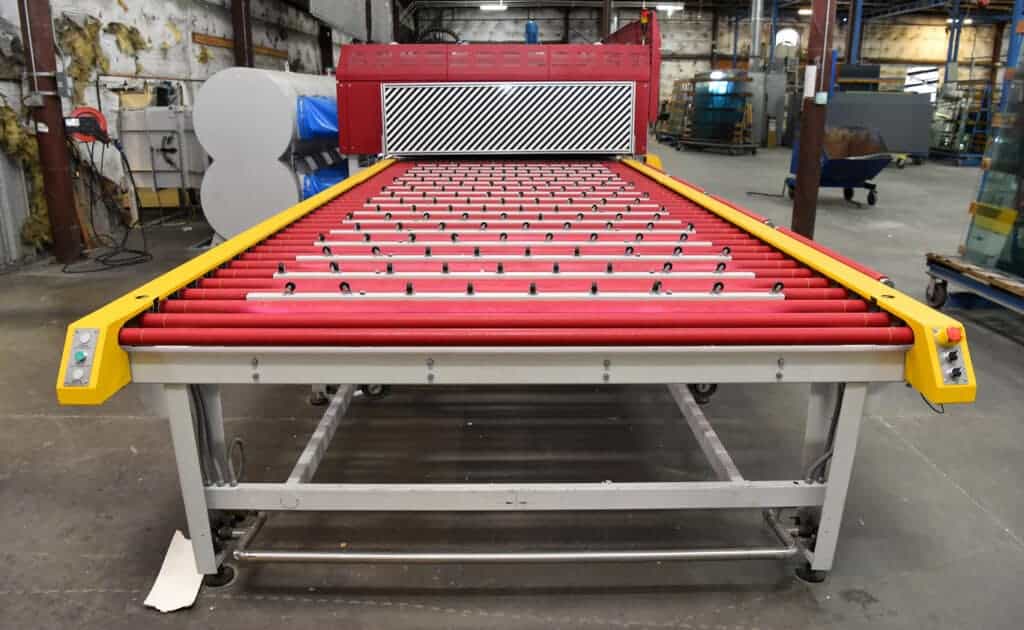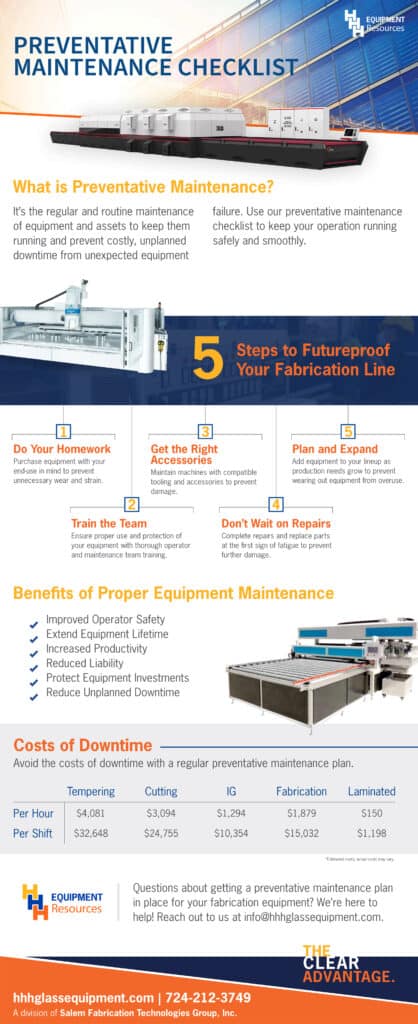What is Glass Seaming?
Glass seaming best practices
Seaming can be performed wet or dry. These methods vary due to preference and application. Both methods are designed to achieve the same result, but inherently have their own advantages and drawbacks. There are also numerous automated systems utilizing other grinding or sanding methods that again are typically selected due to application and preference. We will discuss dry seaming by hand in this blog post.
When you’re dealing with tempered glass, strength and durability are key, but safe handling is also very important. All of these factors are enhanced by glass seaming, or sanding the edges of sharp, cut glass. The unseamed edge of a lite of glass is susceptible to flaking off while undergoing the heating process causing unwanted ceramic roll contamination within the furnace. Technically, you can truthfully say that the strongest glass edge is a proper, clean cut edge on an annealed lite of glass but realistically, the difference is measurable in annealed glass but insignificant after tempering since the glass is now 4 to 5 times stronger than it was in its previous annealed state.
How to properly use a glass seaming machine
Proper seaming is critical to the glass tempering process. If seaming is poorly executed, small fractures can occur in the glass where it meets the seaming machine belt. These fractures release small particles that are not removed by washing, and remain on the glass when it enters the furnace. The particles can also stick to the rollers, damaging and pitting other glass.
Use these guidelines to ensure proper glass seaming.
Use proper seaming speed
When seaming glass, use a slow, steady speed. A good rule of thumb is to limit speeds to no more than one foot per second across the belt. Poor edge quality and damage may occur if the glass travels too quickly or too slowly past the glass seamer belt. Damage may also occur if inconsistent pressure against the belt is applied. Speed and feed are the normal terms used just as in machining or grinding other materials.
Use seaming table stop wheels
Use stop wheels at the back of the seaming table to limit the amount of pressure an operator is able to use. Though some people may complain that it slows down the glass fabrication process, slower speeds and reduced pressure against the belts reduce the risk for damage, resulting in less breakage and waste.
Use the proper seaming belt grit
Sanding belt grit is very important because the wrong grit can damage your glass. As a general rule, don’t use a glass seaming belt coarser than 100 grit. Use 120 grit belts for fine seaming work. Change the belts frequently and use a good quality silicon carbide belt.
Be careful with fine grit belts, as poor glass seaming technique can easily damage them, especially if an unseamed corner is jammed into a belt.
Use the glass seaming proper pressure
Finding the proper pressure can be tricky to figure out. But for most glass, use light pressure. Anything stronger may damage it.
How to maneuver glass along sanding belts
To get a good seam, move the glass away from belts. Assuming the glass is traveling from left to right, slide it until the right edge is 12”–18” beyond the belts. With light pressure, slowly slide the glass to the left past the seamer. When done, pull the glass away from the belts, move the glass back to the starting point, and seam the other edges by moving the glass to the right.
Keep the glass travel linear and avoid seaming in an arc type movement.
For thick glass, move it past the belt slowly in order to get a heavier seam, especially at the corners. Be careful not to accidentally burn the corners. Courser belts are normally used for thicker glass.
Thin glass is very sensitive to seaming. Again, use light pressure but an even slower speed. Never use a belt over 100 grit on thin glass.
How to check for proper glass seaming
There are three different ways to check for a good seam:
- Backlight: Slide a knife-edge along the seamed edge as though you are trying to cut it. Shine a light on the glass from the back. Very few glass particles should be seen (a fine dust is okay). If any large particles are found, reseam and rewash the glass.
- Bright light before tempering: Examine the seamed edges under a bright light using a good quality magnifier with at least 10x power. Look for lots of white particles on the seamed edges and flakes in chips on the cut edge. If there are large particles found, reseam and rewash the glass.
- Post-tempering check: Rub the bottom of the glass with your hand until loose particles of dirt are removed. Then rub it lightly and rapidly with your fingertips. If the sound is much louder underneath than on top, there is bottom surface damage. Shine a bright light on the surface to make damage points stand out.
Typical causes of glass damage
There are many different factors that can contribute to damaged glass, all of which are controllable.
- Speed: This is the major factor in controlling shattered edges.
- High belt tensions: Increases pressure and the chance of a belt breaking. Doesn’t allow the belt to “wrap the edge of the glass.
- Pressure against the belt: Causes the belt to hammer the edge of the glass, not allowing the grit to cut the edge.
- Belt quality: Cheap belts tend to be more expensive in the long run. Use high-quality belts, and change them often.
- Grit: If a belt is too coarse, it can make a cut that’s too heavy, resulting in extra particles.
- Burning or overheating: High belt wear, glass-to-belt pressure, allowing the glass to contact the belts in an arc by not keeping the edge parallel to the belt surface, and a lack of coolant flow at the point of contact can overheat the glass. The hot surface cools instantly, but microscopic cracks can form, causing breakage.
- Edge Prep: Appropriate edgework preparation is essential for the tempering process. Improper techniques will dramatically increase breakage in the quench where the edges are not strong enough to handle the stresses imposed by the heat-treating processes.
A glass seamer is an essential part of a modern, high-quality glass fabrication line. Check out the dual-belt glass seamer or the automated 4-edge glass grinder from HHH Equipment Resources to learn how it can boost your production.











